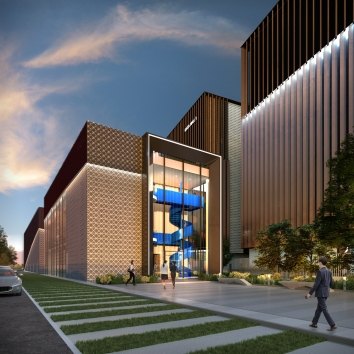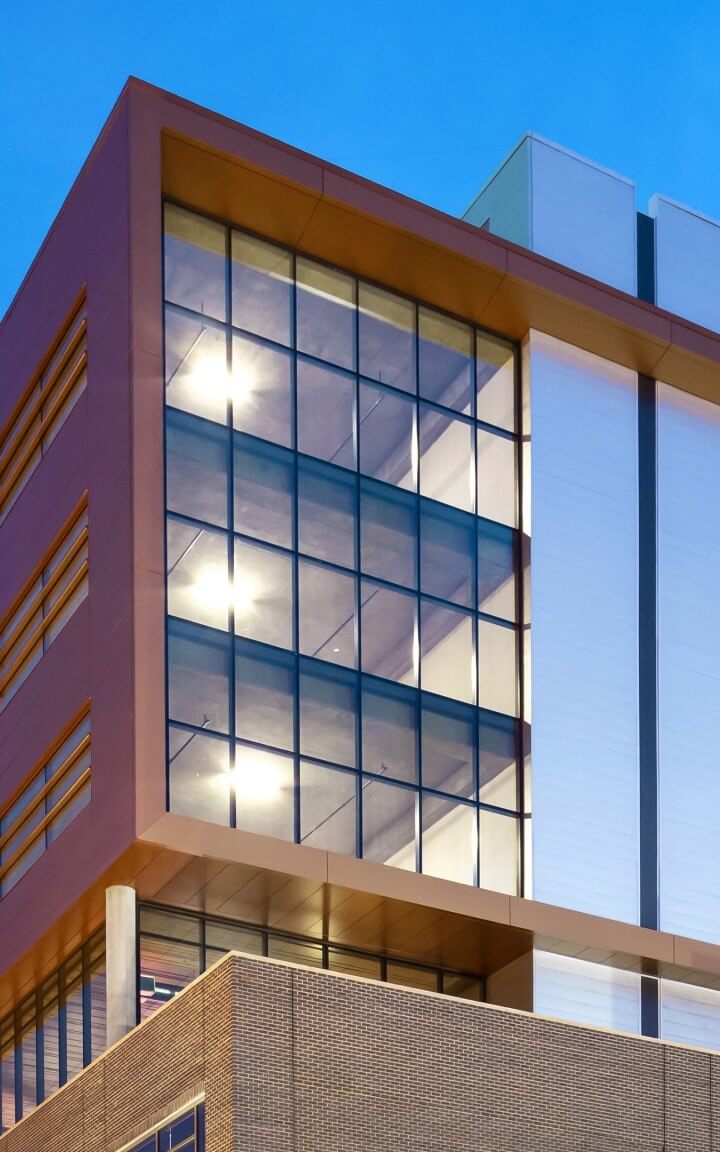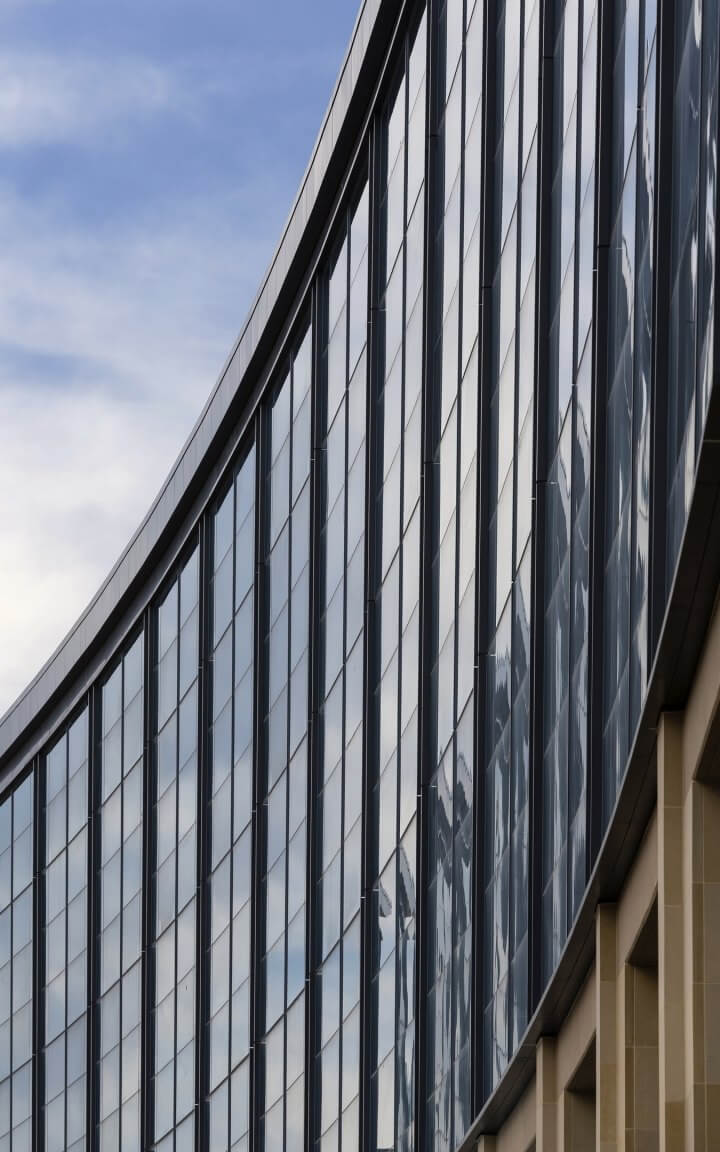The Ascent of Data Centers in the Asia-Pacific

As the data center market continues to expand in Southeast Asia, Andrew Loke and the Singapore team are ramping up to meet demand in the region — aggressively recruiting top talent, managing client relationships, and executing project work. Read on to learn as Andrew discusses our global expansion.
The data center market in the Asia-Pacific region is dynamic and evolving, with an array of challenges and opportunities for industry players. Geographic diversity makes doing business in the East very different than elsewhere around the globe because of the vast region — Southeast Asia encompasses 11 countries, while Asia and Asia-Pacific include many more countries that span from India to Australia. In the Singapore office, we are strategically recruiting a deep bench of knowledge with skills set in various project types who have worked throughout China, Japan, and Singapore. Corgan has worked throughout the Asia-Pacific market for the past few decades and presently we are building a data center in Japan with concept designs in Singapore and India.

East vs West
This geographic diversity poses numerous interesting complexities not limited to differences in economics, culture, technology, and power. Each country in Asia is at different stages of development with Singapore being more advanced. Emerging countries like Vietnam, Indonesia, and Malaysia have more limited technologies and Corgan is diligent in becoming familiar with what each country has to offer to provide our clients the highest level of expertise in the industry.
In addition, phenomena like data localization and data sovereignty creates increasing demand as each country wants to keep its data center infrastructure within its borders. Power generation is an ongoing challenge as we look to more renewable strategies to keep up with the growing energy demand, environmental concerns, and regulatory frameworks.
Singapore especially faces these challenges as well as the challenge to meet the growing demand for data centers while managing its limited energy, land, and water resources. Data centers in the tropics generally require more energy for cooling due to the year-round high temperatures and humidity. With over 70 data center facilities consuming more than 7% of the city-state's total electricity, the need for sustainable solutions is pressing.[1]
Corgan is dedicated to maintaining a leading position in data center design and technology. By designing sustainable and cutting-edge data centers, Corgan not only supports its clients but also promotes the adoption of the most advanced and efficient cooling technologies. This forward-thinking strategy ensures that Corgan's data centers possess an extended sustainability lifespan, aligning with Singapore's environmental goals. This dedication to innovation in turn facilitates productive discussions with local authorities, which helps to advance our clients’ interests and their data center projects in a timely and environmentally responsible manner.
[1] Singapore risks losing new data center demand, Keppel warns - Nikkei Asia

Facing the Challenges of Diversity
When conducting business in Southeast Asia, the challenge lies in the diverse cultural nuances. The way business is conducted from country to country can vary greatly. Understanding cross-cultural communication from greetings, color meanings, proxemics, and even dining etiquette all play a part in relationship building and can affect how projects are carried out. As such, we are constantly on the lookout to hire qualified architects who have cultural awareness and sensitivity to translate meanings and bridge the gap among cultural norms.
To fully deliver an architecture project successfully — whether it is a data center or other sectors — we engage and collaborate with local architects in various jurisdictions. We are constantly looking for ways to build bridges and establish connections in other countries including with consultants, engineers, and contractors who can further facilitate client collaboration.

Data Centers Trends in Asia
It’s quite exciting how data center technologies and ecosystems are ever-evolving, and it’s interesting to contemplate how technological advances will change design. For instance, as semiconductor chips get smaller and store more data will data centers become smaller? These types of questions give us the opportunity to streamline design and work towards sustainability, create innovations in cooling systems, and integrate smart technologies, AI, and quantum computing.
Corgan constantly researches how we can strategically leverage data centers in relation to adjacencies and associated building types. We explore industrial and logistics facilities for our hyperscale clients, design workspaces in third-party data centers to accommodate numerous uses, and provide science and technology research laboratories within a building and ground-up high-performance computing centers. And with data centers — particularly in the Americas and Europe — are a part of the world’s urban cores, we work to cluster these facilities with other business types in high-use industrial mixed-use developments and business parks.

The Outlook
With the uptick in demand for commercial real estate despite the high land cost, current economics in the Asia-Pacific market differs from what our U.S. team finds trending. In contrast to the U.S., the commercial office sector in the Asia-Pacific region remains robust due to the support and the strength of the return to office in the region relative to the rest of the world. According to surveys carried out by Colliers, thanks to factors like the region's short commute times, office occupancy rates average 80% in Asia-Pacific, versus around 50% in North America. [1]
Considering this trend, how can data centers in densely populated cities be optimized and coexist more seamlessly with office buildings and the wider city so that more land can be freed up for more meaningful developments? Are re-purposing old buildings into data centers and building data centers in basements of office buildings possible solutions? The prevalent trend throughout Southeast Asia currently is locations in open spaces on the city fringe. In the future as cities grow bigger? Only time will tell.
The exciting news is Corgan is expanding to all corners of the globe, and the firm’s commitment to research and innovation will keep us on the leading edge of data center architecture, technology, and design worldwide.
[1] Colliers | APAC Global Capital Markets Insights - Outlook Office






